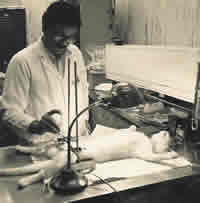|
|
Better Living - Cosmetics and Home Products
What are Ecologically Friendly Home Products?
These are cosmetics, toys and home and garden products that are manufactured, marketed, used and disposed of without harm to people, animals or the environment. Unfortunately, when we purchase most home products we are unwittingly contributing to the suffering of animals through inhumane product tests, and to the destruction of our ecosystem through hazardous and non biodegradable wastes. We are also endangering our own health.
How Do Home Products Threaten Our Health?
Garden products such as herbicides, fungicides, and pesticides contain chemicals known to cause cancer and birth defects. Harmful man-made dioxins and furans are by-products of the manufacture of certain chemicals such as pesticides and wood preservatives. Phosphates, found in soaps and fertilizers, pollute the environment. Styrofoam food containers and insulation, coils in refrigerators and air conditioners, and aerosol sprays contain chloro-fluorocarbons (CFCs). CFCs and halon found in fire extinguishers destroy the ozone layer that protects us from the sun’s ultraviolet radiation.
Corrosive chemical cleaners that are potential heath hazards and create hazardous waste can be replaced with household cleaning methods utilizing natural ingredients such as white vinegar, baking soda, mineral oil and cornstarch.
Aren’t the Harmful Products Tested?
The harmful products are tested on millions of live animals each year, but the tests are inaccurate, extremely cruel and fail to protect the customer. These faulty, unreliable animals tests are conducted for protection against lawsuits and for other economic reasons. However, such tests are not required by law. In fact, non-animal tests are far less expensive and can be performed more quickly.
What Kinds of Tests Are Performed?
 Although most product tests result in injury or death for the animals and can fail human clinical trials, the products are still marketed. Histimines and antibiotics are tested on cats. Although most product tests result in injury or death for the animals and can fail human clinical trials, the products are still marketed. Histimines and antibiotics are tested on cats.
There are four main types of painful experiments that purport to ensure the safety of the consumer. They are the Draize, Lethal Dose, Skin Irritancy and Inhalation tests. No anaesthesia or painkillers are given to the animals on which these tests are performed.
- The Draize Test
- Eyeshadows, hairsprays, shampoos, bleaches, weed killers, oven cleaners, and other household products are put into the eyes of living rabbits. Since the rabbits are held in restraint devices, they are unable to remove these painful irritants from their eyes, which results in corneal ulcers, hemorrhaging and blindness
- The Lethal Dose Test
- Lipsticks, cleaners, insecticides and other household products are force-fed to guinea pigs, dogs, cats and other animals until a percentile or all of them die. These animals suffer painful deaths often characterized by vomiting, convulsions, diarrhea and ruptured organs
- Skin Irritancy Test
- A corrosive substance is applied directly to the shaved, abraded skin of test animals. The results are burns, rashes, blistering and cracking of the skin. For up to two weeks, the animals are continuously confined in restraint devices and many suffer from spinal cord injuries as a consequence. Some toxic substances are absorbed through the skin and may kill the animals
- Inhalation Test
- To test the respiratory effects of aerosol products, animals are kept isolated in exposure chambers for up to 90 days while constantly being exposed to potentially toxic vapors
Why Don’t These Test Protect Us?
Data from tests on animals are not representative of human reactions because other species are anatomically and biologically different from human beings. Many products are marketed even after they are shown to be harmful to animals. Conversely, many products that have ‘proven” safe through animals tests have harmed human beings. Non-animal assays, such as human cell/tissue cultures and computer analyses, are more humane, economical and efficient in ensuring people’s safety.
What Toys Have Been Tested on Animals?
Rabbits and other animals are tortured for the sake of a new toy. Skin irritancy tests have been used Kenner’s “Dress ‘n Dazzle” lipstick. Draize and Lethal Dose tests have been used to test Kenner’s “Play-Doh”, “Glo-Doh” and “Ghostbusters Ecto-Plasm”. L.J.N. tested its “Gotcha” gun, by shooting the gun’s paint pellets into the eyes of live rabbits. Ray Plastics tested its pellet-shooting gun in a similar manner.
What Can I Do?
- Decide to buy or reject a product based on the product’s ecological impact. Freedom of choice represents a strong economic and ecological force
- Boycott cosmetics, toy and home product manufacturers who carry out tests on animals. Write to the companies and tell them why you are no longer buying their products. And tell your friends and neighbours how you feel!
- Use recycled paper and biodegradable packaging. Recycle your own waste materials and encourage local councils to start up regular recycling services for homes and businesses
- Urge the government to ban inhumane and scientifically fallacious products tests on animals
- Urge the government to ban the use of home products that harm our ecosystem
Read:
- How to Get Your Lawn Off Drugs
- America - The Poisoned
- Silent Spring
- Shopping for a Better World 1989
- The Natural Formula Book for Home and Yard
- The Household Pollutants Guide
|
|